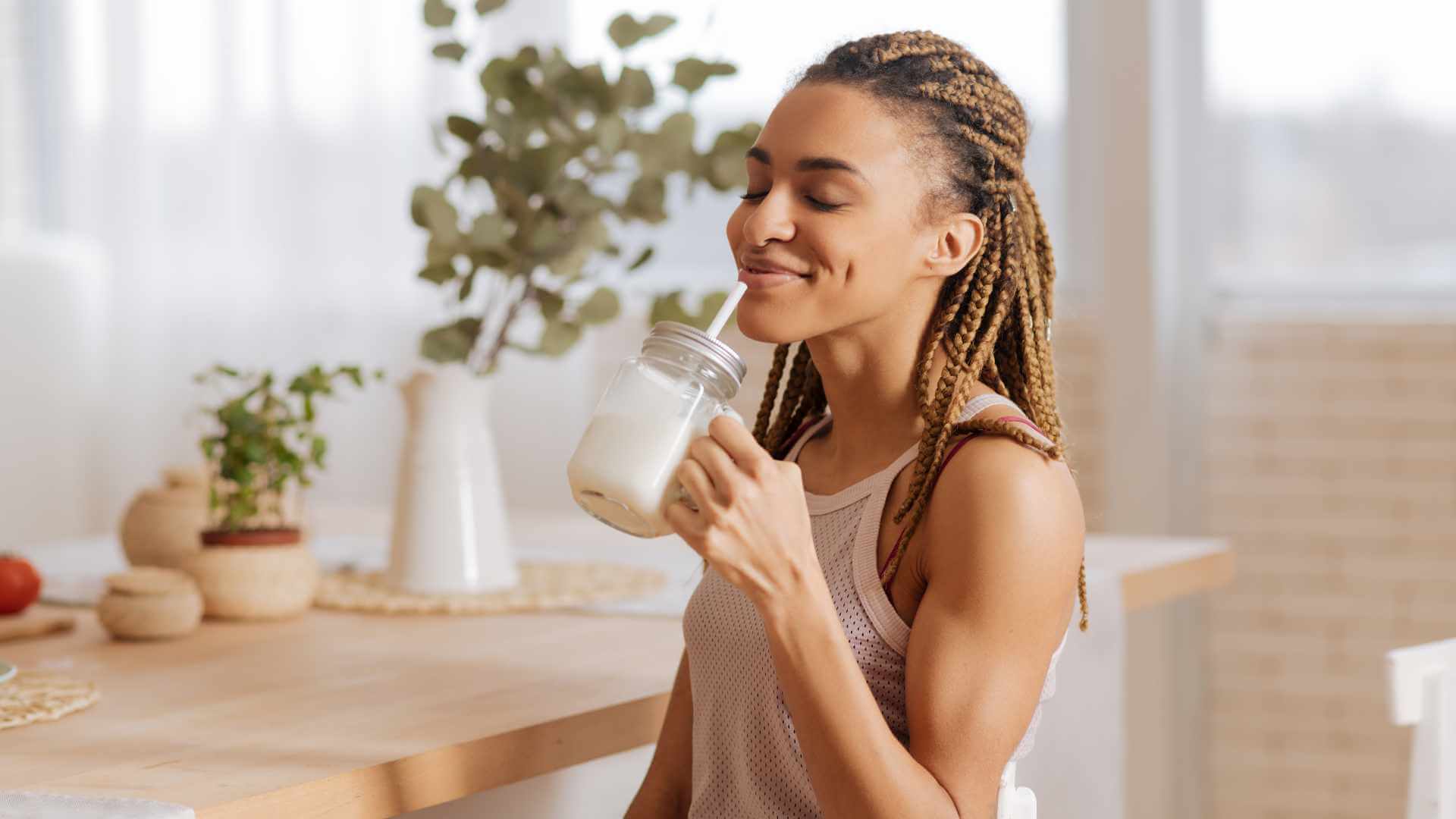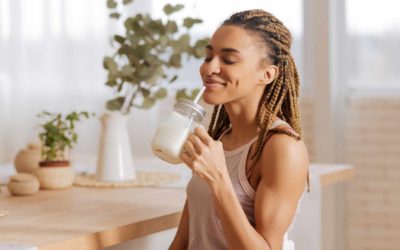When it comes to diet & nutrition, it can be tricky to find reliable information. When searching online, you’re very likely to come across conflicting advice and it can make things rather confusing. Here, we’re taking a look at one of the most talked about nutrients – protein. We’ll answer some of the big questions about it and dispel some misconceptions along the way. Let’s get started!
What Is Protein And Why Do We Need It?
Protein is a nutrient that is made up of smaller molecules called amino acids. These amino acids are building blocks for our cells and we use them to produce muscle, bone, and tissues within the body. But that’s not all. We also need it to repair damaged cells and make enzymes and hormones. Protein is also important for maintaining strong and healthy skin, hair, and nails!
Protein plays an important role in our weight management and energy levels too. Not only is it a wonderful source of energy, but it also takes longer than carbohydrates to break down in the body. This means eating high-protein foods leave us feeling fuller longer, so we’re less likely to snack between meals – we’ll talk a bit more about its role in weight management later on.
Where Do We Get Protein?
Getting enough protein is actually a lot easier than you might think! There are so many different foods that you can incorporate into your diet that can help you boost your intake. For example, if you’re omnivorous (you eat meat, dairy and plant foods), you can find eat:
- Meat: white-meat poultry (chicken & turkey) is best as it is leaner than a lot of red meat (beef, lamb, pork). However, you can opt for lean cuts of beef, such as sirloin, round cuts and >93% lean minced beef.
- Fish: oily fish is best (salmon, trout, mackerel, herring, sardines, tuna)
- Dairy: greek yoghurt, cheese and milk are all good sources of protein.
- Eggs
However, if you’re vegetarian or vegan, you’ll need to look to plant-based sources of protein to make sure you’re getting enough! It’s important to note that while individual plant protein sources don’t contain all nine essential amino acids, plant sources do offer more fibre (great for your gut health!), vitamins and minerals than animal protein sources. However, if you vary your diet with a combination of different plant protein sources, you will get enough of these essential amino acids to meet your needs.
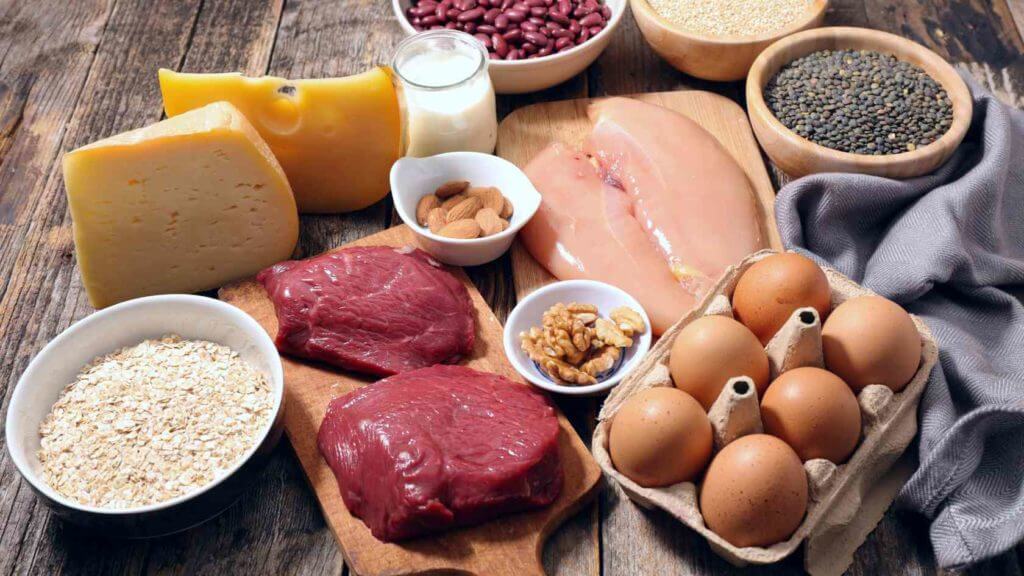
Plant Milk
In recent years, plant milk has become a lot more popular and readily available. These days, you’re spoiled for choice when you visit your local supermarket! Plant milk doesn’t just taste great in your morning flat white, they’re also packed with protein, just like cow’s milk. However, not all plant milk is created equal and some will have more protein than others.
Let’s take a look at the different milk to see how they stack up. For the sake of comparison, on average cow’s milk offers approx. 8 g protein per cup.
Soy milk, the OG dairy alternative, was originally seen as a by-product of the tofu-making process but it is now a staple in any plant-based or lactose-intolerant person’s pantry. While protein content will differ from brand to brand, you can expect between 7 and 20 g of protein per cup of soy milk.
Oat milk and hemp milk are both relatively new options, and while they’re super sustainable, they might not be the best options if you’re trying to up your protein game. Both kinds of milk are super creamy so they work well in tea and coffee but they only offer approximately 3 – 4 g of protein per cup.
There is another option… just hear us out on this one. Pea milk offers a whopping 8 g (approximately) of protein per cup! While it might sound weird, many people who are used to consuming cow’s milk find that pea milk is the closest plant milk in terms of consistency and taste.
Soya and Tofu
As we know soya milk is packed with protein, therefore it makes sense that other forms of soya will offer the same benefits. Tofu is made from the curds of soya milk and it can be used in so many different ways. You can marinade it, fry it, steam it, crumble it, shred it… the possibilities are endless. Just 100 g of tofu offers about 8 g of protein.
You can eat soybeans as they are or you can use them to make other foods like tempeh or meat substitutes. You can get an impressive 15 g of protein from 100 g of soybeans.
Plant Proteins
Whether you’re trying out Veganuary, trying to cut down your meat intake, or you just want to boost your protein intake, plant proteins are a great way to do this. There are many meat “substitutes”, such as Quorn products, that use mycoprotein. Mycoprotein is actually made from mushrooms but it looks incredibly like processed chicken!
Alternatively, you can opt for products made using soy protein. Soy protein is made by removing the fat from soy flour so it ends up as a high-protein, low-fat food known as Texturised Vegetable Protein (TVP). Just one cup of TVP offers a very impressive 36 g of protein per cup! If you take a look at the vegetarian section of the freezer in the supermarket, the majority of products will be made using TVP or pea protein.
Legumes and Pulses
Legumes and pulses are often overlooked but they’re actually packed with protein and they can really help boost your intake. Chickpeas, lentils and beans are all super cheap and you can buy them in most supermarkets.
Both tinned and dried legumes are ideal for popping in the pantry as they have a long shelf life and you can add them to almost any dish. For instance, you can add them to casseroles, stews, soups, salads, and curries. You could also add beans to burritos, pasta dishes and even baked potatoes – whatever way you eat them, they’ll bring you a little closer to your protein goal.
Nuts and Seeds
Nuts and seeds are also good sources of protein and just like legumes and pulses, you can pop them into almost any dish! Sprinkle a mix of chia seeds, hemp seeds, pumpkin seeds and flax seeds over your salad to add a little extra crunch. Or add chopped cashews or peanuts to your stir-fries.
Alternatively, you can add nut butters to your diet. You can add almond butter to smoothies or use peanut butter on your morning porridge!
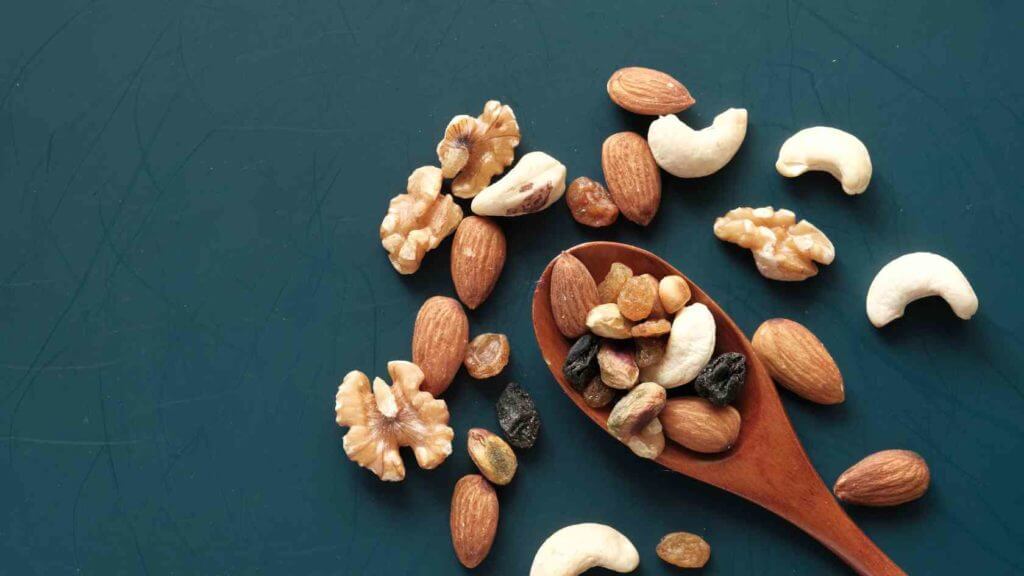
Protein Powders – Are They Really Worth The Hype?
If you have spent any time on social media over the past couple of years, you will have seen a campaign or two promoting different protein powders. But are they good for you? The answer is yes… and no.
Adding protein powder to your diet can be a brilliant way to effortlessly up your protein intake. However, you’ll need to read the ingredients carefully if you’re trying pre-made protein bars or protein shakes as they can be packed with refined sugars. Your best bet is to make them yourself – we’ll come back to this in a bit.
Whey Protein
If you’re buying protein powder for the first time, it’s easy to feel overwhelmed – there are so many different products on the market. From regular whey protein powder to clear whey isolate and from vegan protein to pre-made protein balls and other snacks, it can be hard to know where to start. Let’s make it easier!
Whey protein is a mix of proteins isolated from whey, the liquid part of milk that separates during cheese production. As you can imagine, it doesn’t taste great on its own but it usually comes in a range of different flavours so you can choose one that works for you.
As whey protein is a mix of different proteins, it contains a wide range of essential amino acids which your body can absorb quickly. It also contains other nutrients that can have positive biological benefits. However, we recommend reading the ingredients list carefully when buying pre-made protein snacks as there can be a lot of added sugars.
It is also worth noting that whey protein is not vegan-friendly but it is suitable for vegetarians. As it is derived from cow’s milk, it isn’t suitable for anyone following a vegan lifestyle. Luckily, there are many more vegan protein powder options to choose from!
How To Use Protein Powder
All protein powder products will contain different amounts of protein so we recommend checking the serving size on the packaging of the product that you have bought to make sure you’re getting enough/not taking too much. We also don’t recommend relying solely on protein powder for your daily intake – it’s best to try and get as much protein from your diet as possible and use protein powder to “top up” if you feel you are not getting enough through your food.
It’s also important to make sure you are contributing to your protein goals throughout the day – try to make sure you have protein at each meal rather than trying to get it in one sitting. This way, your body can break it down and use it more efficiently and you will have more balanced energy levels throughout the day.
Please note, it is important not to take too much protein, especially in the form of supplements. This can predispose you to potentially serious medical conditions, such as kidney disease. If you are not sure how much is safe to take, always seek medical advice.
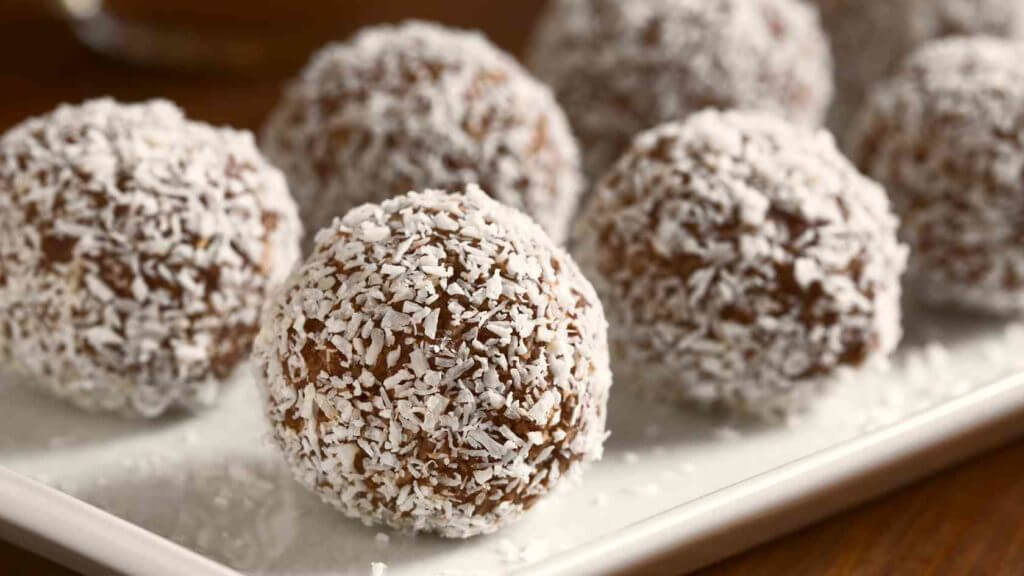
Protein Shakes, Bars & Energy Balls
Protein powder is super easy to incorporate into your daily routine. You can mix a scoop of powder with plant/cow’s milk to make a milkshake, or you can add it to your morning smoothies. Alternatively, you can opt for clear protein which will dissolve in water to make a juice-like drink that you can sip.
You can also add protein powder to your foods for an extra boost. For instance, you can make protein pancakes by adding the powder to the pancake batter and reducing the amount of flour used. If you add 30g protein powder, just reduce your flour by 30g so the consistency of the mixture isn’t affected!
Likewise, you can combine protein powder with other high-protein foods to make bars and energy balls at home. Simply add your ingredients to the food processor to combine. Then, scoop out the mixture and shape into balls or add it all to a baking tray and pat it down flat. Once you have your desired shape, you can pop the balls/bars into the fridge to set. If you wish to make protein bars, you can just use a sharp knife to cut the set mixture into rectangles! Here are two examples of tasty, protein bars/balls that you can make in minutes:
Reeses Pieces Energy Bars
Add the following ingredients to the food processor to combine before spreading on a baking sheet and allowing to set in the fridge. Once set, cut into rectangle bars.
- 2 scoops of chocolate-flavoured protein powder
- 2 tbsp chocolate chips
- 1 ½ cups rolled oats
- ¼ cup honey/agave syrup
- 1 cup unsweetened peanut butter
Bounty Bar Energy Balls
Add the following ingredients to the food processor to combine before shaping into balls and rolling in desiccated coconut. Allow to set in the fridge before serving.
- 50 g almonds
- 2 scoops of chocolate-flavoured protein powder
- 50 g pumpkin seeds
- 1-2 tbsp coconut oil (melted)
- 100 g dates (pitted)
- Desiccated coconut (to decorate)
Protein As Part of Weight Management
The amount of protein we need will differ from person to person. It depends on body type, age, and how active you are. For instance, athletes will need more to repair damaged muscles. Likewise, you will need to up your intake if you’re hitting the gym and trying to build up muscle. But protein also plays an important role in weight management.
As we mentioned above, high-protein foods help us feel fuller for longer. This means that we’re less likely to snack between meals and so, it helps us reduce our calorie intake. This is important if you’re trying to lose weight as you will need to be in a calorie deficit. If you’re trying to maintain your weight as you will need to stick to the same calorie intake to avoid gaining/losing weight.
Want to learn more about weight management? Check out our Weight Management Service!
You can also stay up to date with insightful health and wellness content, as well as new services and offers from Webdoctor.ie by joining our online community! Find us on TikTok, Instagram, Facebook, and Twitter!

